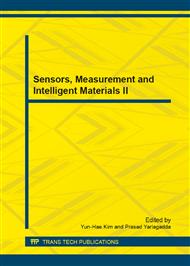p.832
p.838
p.843
p.847
p.851
p.856
p.863
p.867
p.871
A Data Transmission Strategy Proposed for Subsea Surveillance
Abstract:
As a promising way to the certain area surveillance, the application of wireless sensor network on the unknown subsea observation is becoming more significant. After placing the sensor nodes, each sensor node will generate a common communication frame and choose the next hop neighbor node randomly, which could results in redundant energy consumption. In this paper, a data transmission strategy is proposed including routing scheme, frame format and the corresponding topology structure. By considering the transmitting distance, energy consumption and transmission probability, the introduced strategy can reduce the redundant energy consumption, balance the network payload and prolong the subsea observation network lifetime. The simulation results show that the strategy is more efficient than the common one.
Info:
Periodical:
Pages:
851-855
Citation:
Online since:
December 2013
Authors:
Price:
Сopyright:
© 2014 Trans Tech Publications Ltd. All Rights Reserved
Share:
Citation:


